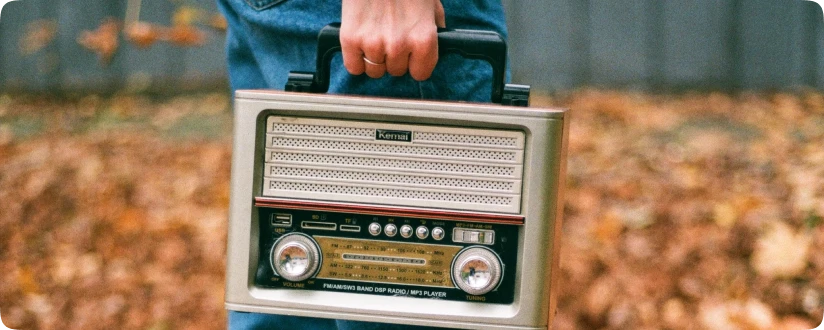Go back
4 Reasons Why Radio is Still Popular

With the continuously rising popularity of podcasting, many people are beginning to wonder if it's replacing radio. Data from Nielsen suggests otherwise. In America, 92% of people still listen to the radio weekly - that's 272 million people approximately. This is far higher than the 22% who listen to podcasts on a weekly basis and much higher than the 87% who watch television on a weekly basis.
Nielsen demonstrates that radio is still the most sought after form of media news and entertainment in America across all demographics. It reaches 90% of those in the 18-34 age group, 94% aged 35-49 and 91% aged 50 and older. That said, here are some thoughts on why radio is very popular today. Let's find out what's behind radio's continuing popularity, and why it's outperforming podcasts and TV in the digital era.
Radio is Portable
Radio is the handy companion for long daily commutes, it helps you get through long, boring days at the office and makes home chores just a bit more bearable.
69% of weekly radio consumption is from outside the home, particularly in cars and at workplaces, according to Nielsen’s data. Radio can be easily accessed by anyone, because almost all cars come equipped with radios. On the average work day, audience listenership spikes from 6/7am through 5pm. On weekends numbers peak around mid-day, when people are outdoors or shopping.
Radio is very advertiser-friendly. In modern times when people favor ad-free subscription services, radio is a medium that not only allows advertisers to reach large audiences but also targets them when they’re nearest to retailers.
Radio is Free
As radio is funded by advertisers, it doesn't require a monthly subscription, unlike many current media services.
Podcasts are often on subscription sites like Spotify. This makes radio a free alternative to other costly services. Take Soho Radio for instance - it’s accessible to anyone, anywhere online via radio directories and through the player on their site.
Radio is Adaptable
Radio adapts as technologies and consumer trends change. Now, you can access radio via your laptop, computer, phone, or even a smart speaker, so you can listen in to your favorite stations anywhere and at any time.
Unlike TV, radio doesn’t require you to set time aside to sit and listen to it. Being an audio-only medium, you can take radio with you anywhere without worrying about missing out on any part of the listening experience. TV, on the other hand, requires the full attention of the audience due to audio and visual elements.
Radio is Inclusive
Nielsen’s findings demonstrate the popular appeal of radio across demographics. It draws extensive listener numbers across age, gender and ethnicity. This is ahead of the 87% that watch television weekly and significantly ahead of the 22% who listen to podcasts weekly. Radio has a wide variety of stations that can appeal to all audience tastes.
Many podcasts cover niche topics, aiming for limited audiences. Besides, podcasts are not as easy to discover and listeners have to go out of their way to find them. Conversely, radio’s easily digestible, established format promotes generalized content presented by DJs, targeted to larger audiences. Because radio lacks story arcs and long-form tales, listeners can tune in or out without missing anything.
Radio presenters play an important role in drawing in people. Often, they become like friends to listeners, some of whom even tune in daily simply to hear their voice. This makes radio an easier medium to get into.
Radio is all about reaching a broad audience. Accordingly, stations which focus on what’s popular are typically the most successful. According to Nielsen data, country music stations are the most popular among the 12-54 demographic, accounting for 13.2% of all listening time in America.